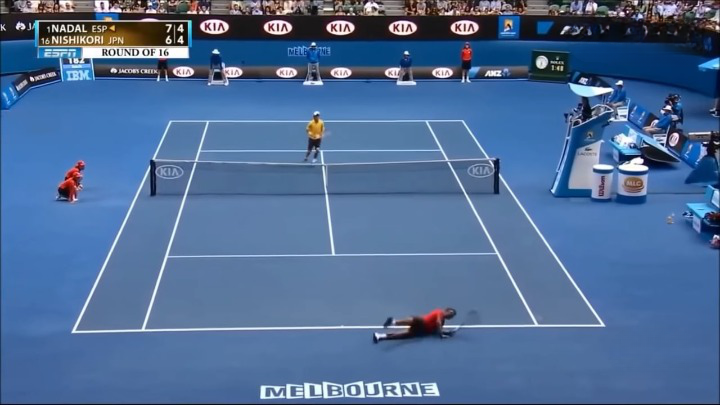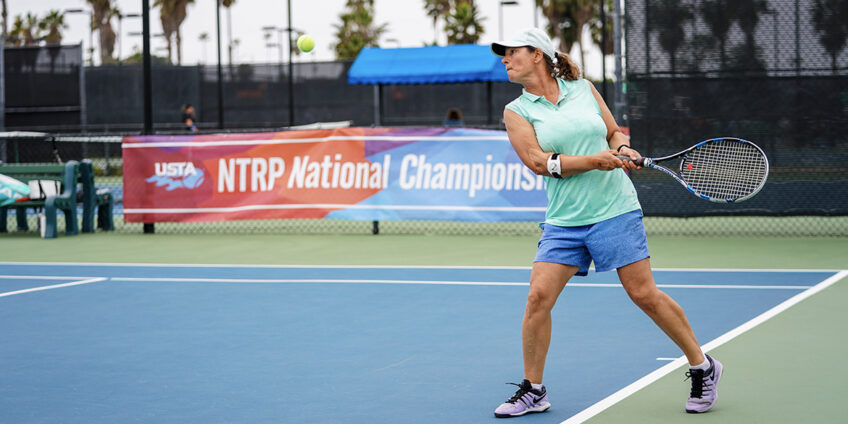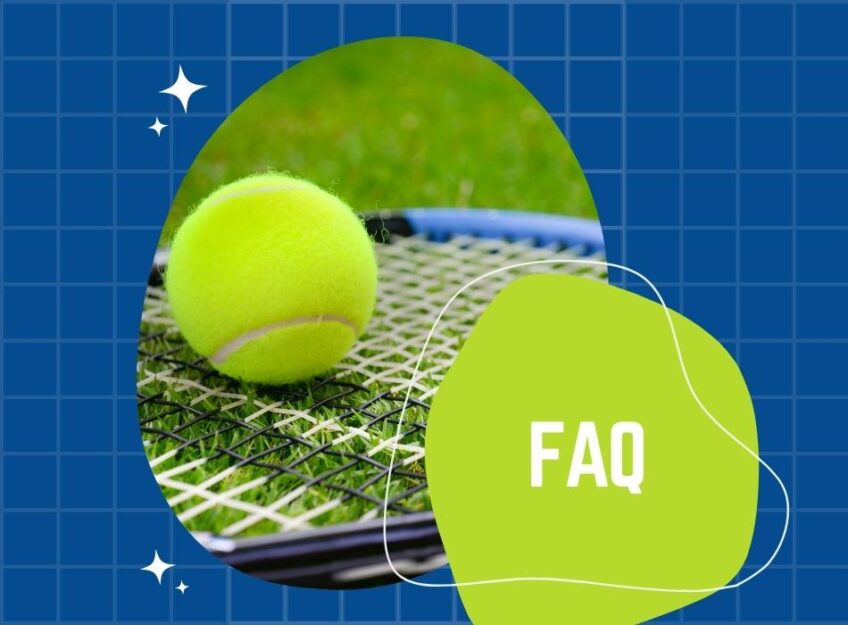In tennis, the term “walkover” is used to describe a match in which one player advances to the next round without having to play a single point. Although it may seem like an easy way to progress in a tournament, a walkover can have various implications for the player, the opponent, and the tournament itself.
In this article, we will explore the meaning of a walkover in tennis, the rules and circumstances that can lead to a walkover, and the potential benefits and drawbacks of receiving or giving a walkover. Whether you are a seasoned tennis fan or a newcomer to the sport, understanding the concept of walkovers can enhance your appreciation of the dynamics and strategies of tennis matches.
Walkover Meaning and Definition
The term ‘walkover’ is used in tennis to describe a game or match that has been won without competing. In tennis, a walkover happens when a scheduled opponent fails to appear on the court or is unable to compete due to injury or other reasons.
Let’s take a closer look at the definition and implications of a walkover in tennis.
Walkover in Tennis Tournaments
They can happen due to injury, illness, or personal reasons, and they are marked as W/O in the scorebooks.
This term comes from the idea that the advancing player has an easy walkover into the next round without any effort. While they are not common, they do happen at all levels of tennis from local tournaments to Grand Slams.
It’s important to note that walkovers can have an impact on the schedule of the tournament and the mental and physical preparation of the advancing player. Many players prefer to play and earn their victories on the court rather than advancing by walkover, as it can disrupt their rhythm.
How Walkovers Happen in Tennis
This can happen for a variety of reasons, such as injury, illness, or personal issues that prevent the player from playing.
In some cases, both players may agree to a walkover, such as when one has a guaranteed spot in the next round and the other is not in contention to advance.
It’s important to note that a walkover is different from a retirement in tennis, which occurs during a match when a player is unable to continue due to injury or illness. In retirement, the opposing player is awarded the win, but they must still earn the victories for any remaining sets.
Although it is a beneficial outcome, players typically prefer to earn their wins through match play.
Consequences of a Walkover in a Tennis Match
- For the player who fails to show up or withdraws, there may be a fine or suspension, depending on the reason for their withdrawal.
- The player who wins by walkover will advance to the next round of the tournament but may not receive any ranking points or prize money.
- The integrity and reputation of the tournament and the sport may be impacted, especially if the walkover occurs in a significant match, such as a Grand Slam or a Davis Cup tie.
Reasons for Walkovers in Tennis

They can occur for different reasons, such as a player being too injured to compete or a player not showing up for the match.
Let’s explore the reasons for walkovers in detail.
Injuries and Illness
Some reasons for w.o in professional tennis include injuries such as ankle sprains, back strains, and wrist injuries, illnesses such as viral infections and food poisoning, and personal reasons like family emergencies or visa issues.
They are not uncommon in tennis, and they can have a significant impact on a player’s ranking and the tournament draw.
While a walkover guarantees a win for one player, it is not an ideal way of winning a match, and most players prefer to earn their victories on the court. However, players prioritize their health and safety over the pressure to play in tournaments, and at times, a walkover decision is the most appropriate course of action to take.
Scheduling Conflicts
Scheduling conflicts are one of the main reasons for them in tennis matches. A w.o occurs when a player is awarded victory without having to play a single point because their opponent is unable to compete.
Here are some common scheduling conflicts that can lead to walkovers:
Injuries: An injury during warmup or an existing physical condition can force a player to withdraw from a match.
Fatigue: A player may withdraw from a match due to fatigue caused by playing multiple matches in a short period or traveling between tournaments.
Illness: Illness or contagious diseases can lead to last-minute withdrawals or retirements during a match.
Personal reasons: Personal emergencies, family events, or important appointments can cause a player to miss a match.
Withdrawals from a Tennis Tournament

Withdrawals in a tennis tournament are a common occurrence for several reasons that range from medical conditions, and injuries to scheduling conflicts or personal reasons. Understanding what “walkover” means in tennis can help you comprehend tournament matches’ outcomes and the associated players’ scores.
Here are some reasons for walkovers in tennis:
- An injury that hinders the player’s ability to serve or play skillfully.
- Medical conditions that prevent the player from performing at peak condition or pose a risk to the player’s health.
- Personal reasons, such as family emergencies or travel complications, prevent the player from attending the tournament or a specific match.
Walkover vs. Default in Tennis
In the game of tennis, both terms are used to signify a situation when a player is unable to complete a match due to certain rules. However, they have a few key differences that can make one more suitable than the other in certain situations.
In this section, we will discuss what these two terms mean, how they are different, and when it is appropriate to use each type.
Difference between a Walkover and a Default
In tennis, a walkover and a default are two different things, albeit with similar outcomes.
It occurs when one player or team is unable to complete a match due to injury, illness, or other valid reasons. In this case, the opponent is given a free pass to the next round.
On the other hand, a default is when a player or team is disqualified from a match due to a rule violation, such as unsportsmanlike behavior or equipment abuse.
While a walkover is a legitimate way for a player or team to advance, a default is considered an undesirable outcome due to the negative connotations associated with it.
It’s important to note that a walkover does not impact a player’s record or ranking, while a default does.
Knowing the difference between a walkover and a default is crucial for understanding the outcome of a tennis match and its impact on a player’s career.
How a Walkover or Default Affects the Player’s Rankings
It does not have a negative impact on a player’s rankings, as it is considered a result of circumstances beyond their control. On the other hand, a default can result in a player losing rankings points due to a violation during the match.
It’s important to note that a default can be enforced by the tournament referee due to violations such as unsportsmanlike conduct, delay of the game, or medical issues.
Although a walkover does not affect rankings, it can have an impact on a player’s match readiness and momentum. As a result, some players may prefer to play a match even if the opponent is injured or unable to compete.
Walkover in Tennis History
The concept has been around since the 19th century and has a rich history in the sport. Let’s explore the history of the walkover.
Most Famous Cases of Walkovers in Tennis History
In the 1969 Wimbledon final, Pancho Gonzales was awarded a walkover after his opponent, Charlie Pasarell, was disqualified for protesting a line call.
In the 2001 Australian Open, Greg Rusedski advanced to the fourth round after his opponent, Fabrice Santoro, withdrew due to injury.
In 2017, Tomas Berdych advanced to the Wimbledon semi-finals after his opponent, Novak Djokovic, withdrew due to a recurring elbow injury.
They can have a significant impact on a tournament, altering the path of players and the outcome of the event. While unfortunate for the player who withdraws, walkovers can be advantageous for the player who advances.
How Walkovers Impacted Tennis Players’ Careers
They have had a significant impact on the careers of many tennis players, both positive and negative.
On one hand, receiving a walkover can give a player extra rest and recovery time, which can be especially beneficial during long tournaments. It can also help players who are dealing with injuries, allowing them to avoid further aggravating their condition.
On the other hand, if a walkover occurs during a tournament’s early rounds, it can prevent a player from gaining valuable match experience and momentum. Additionally, some players may view walkovers as unsatisfying victories and prefer to win matches on the court.
Overall, while walkovers can offer some advantages to players, they can also be a source of frustration and disappointment.
How Tennis Organizations Handled Walkovers in the Past.
Prior to the late 1800s, they were not an uncommon occurrence in tennis tournaments. Often, players withdrew from matches due to injuries or illness, or because they needed to attend to personal matters. In these cases, the opponent was simply awarded the win by default.
However, as tennis became a more organized and standardized sport, governing bodies began to develop more uniform rules for handling walkovers. Today, most major tennis tournaments have clear protocols and policies for them, outlining factors such as timing, notification requirements, and alternative arrangements for the remaining player.
Despite the changes, they continue to occur in tennis, often causing controversy and debate among fans and players alike.
FAQs

Are there any strategies or tactics related to walkovers in tennis?
Some players may use them strategically, for example, by withdrawing from a match to rest for a more important tournament or to avoid playing an opponent they fear.
Can a player who receives a walkover in tennis request to play a practice match instead?
It depends on the rules of the tournament and the availability of other players. Some tournaments may offer practice matches to players who receive them, while others may not.
Can a player who gives a walkover in tennis be penalized or fined?
It depends on the circumstances and the rules of the tournament. Some tournaments may penalize or fine players who give them without a valid reason.
Is a walkover a common occurrence in tennis?
It depends on the tournament and the level of the players. They are more common in lower-level tournaments or qualifiers, where players may have less experience or resources to deal with injuries or travel issues.
Can a walkover be reversed in tennis?
It is very rare for it to be reversed, as it would require exceptional circumstances, such as a successful appeal against a disqualification.
Can a player who receives a walkover in tennis withdraw from the next round?
Yes, a player can withdraw from the next round if they are unable to compete, but they would not receive another one and would be replaced by a lucky loser or a player from the qualifying draw.
Conclusion
In conclusion, a walkover in tennis is a type of match where one player advances to the next round without having to play a single point due to the withdrawal or absence of their opponent. While receiving a walkover can provide a player with rest and recovery time, it can also affect their match preparation and overall performance. On the other hand, giving a walkover can result in a loss of prize money and ranking points, and can even lead to penalties or fines in some cases.
The occurrence of walkovers in tennis can vary depending on the level and nature of the tournament, as well as the fitness and availability of the players. Understanding the concept of walkovers is important for tennis players, coaches, and fans, as it can impact the dynamics and strategies of the sport.

